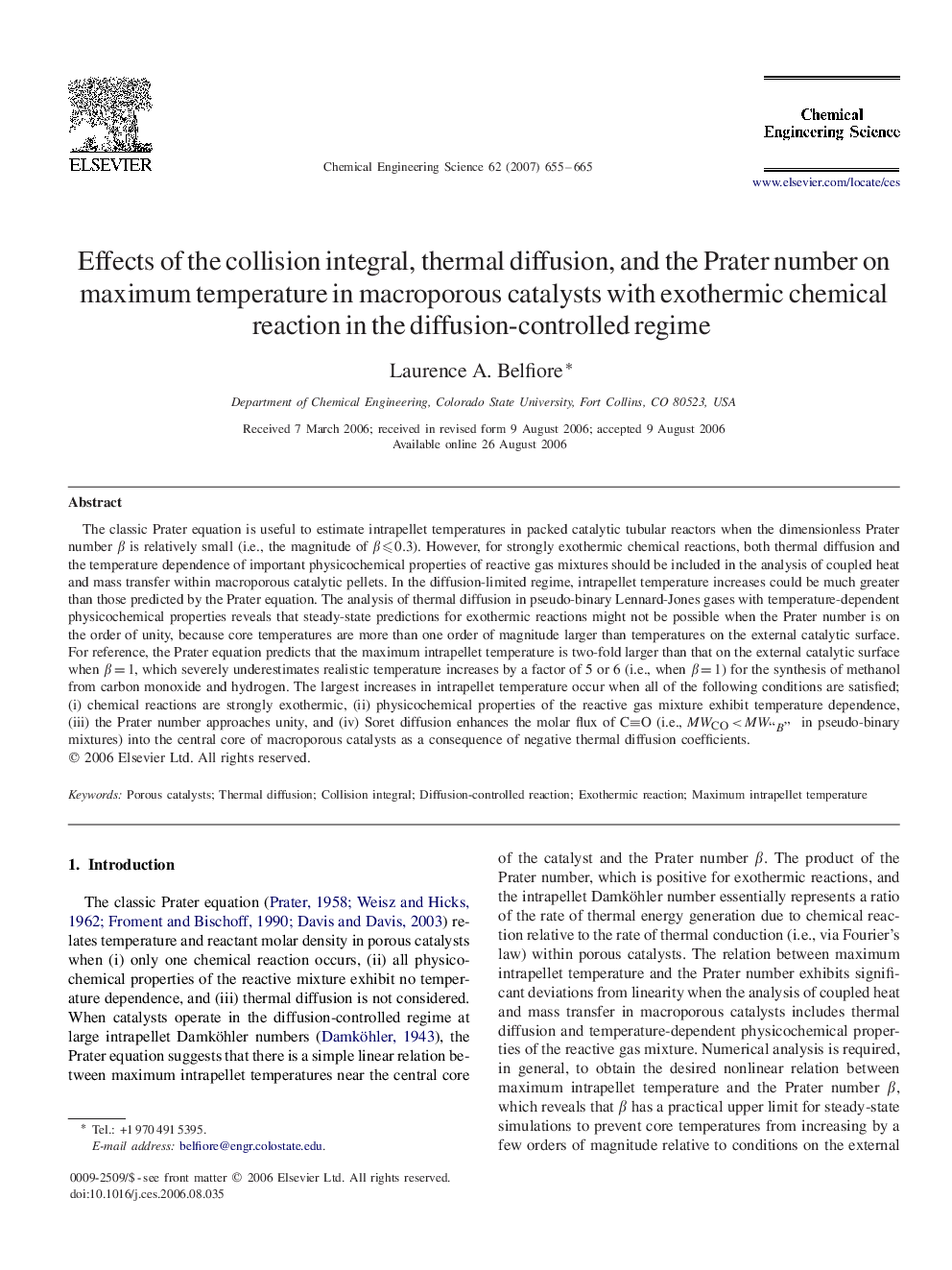| Article ID | Journal | Published Year | Pages | File Type |
|---|---|---|---|---|
| 160239 | Chemical Engineering Science | 2007 | 11 Pages |
The classic Prater equation is useful to estimate intrapellet temperatures in packed catalytic tubular reactors when the dimensionless Prater number ββ is relatively small (i.e., the magnitude of β⩽0.3β⩽0.3). However, for strongly exothermic chemical reactions, both thermal diffusion and the temperature dependence of important physicochemical properties of reactive gas mixtures should be included in the analysis of coupled heat and mass transfer within macroporous catalytic pellets. In the diffusion-limited regime, intrapellet temperature increases could be much greater than those predicted by the Prater equation. The analysis of thermal diffusion in pseudo-binary Lennard-Jones gases with temperature-dependent physicochemical properties reveals that steady-state predictions for exothermic reactions might not be possible when the Prater number is on the order of unity, because core temperatures are more than one order of magnitude larger than temperatures on the external catalytic surface. For reference, the Prater equation predicts that the maximum intrapellet temperature is two-fold larger than that on the external catalytic surface when β=1β=1, which severely underestimates realistic temperature increases by a factor of 5 or 6 (i.e., when β=1β=1) for the synthesis of methanol from carbon monoxide and hydrogen. The largest increases in intrapellet temperature occur when all of the following conditions are satisfied; (i) chemical reactions are strongly exothermic, (ii) physicochemical properties of the reactive gas mixture exhibit temperature dependence, (iii) the Prater number approaches unity, and (iv) Soret diffusion enhances the molar flux of C≡OC≡O (i.e., MWCO
